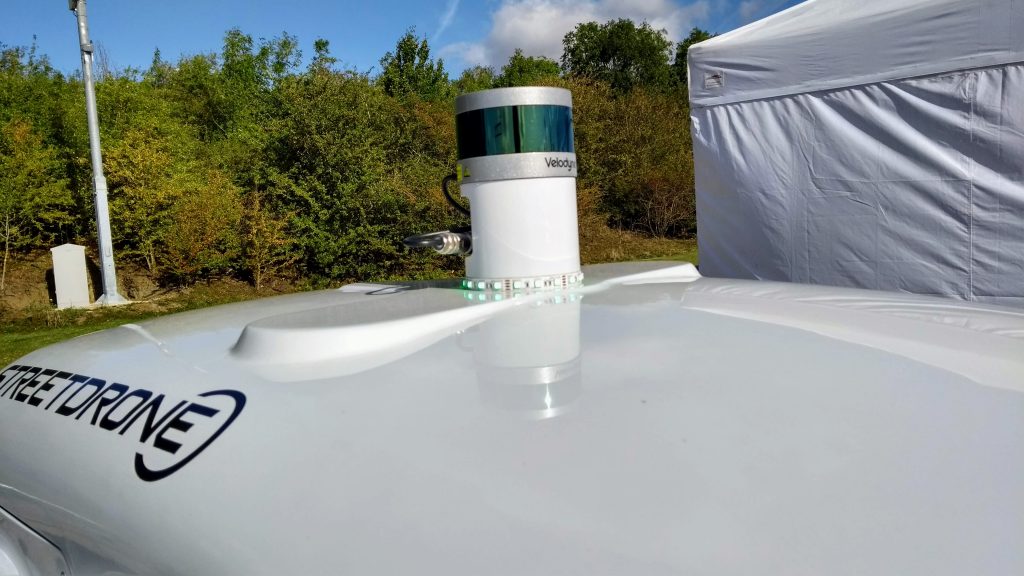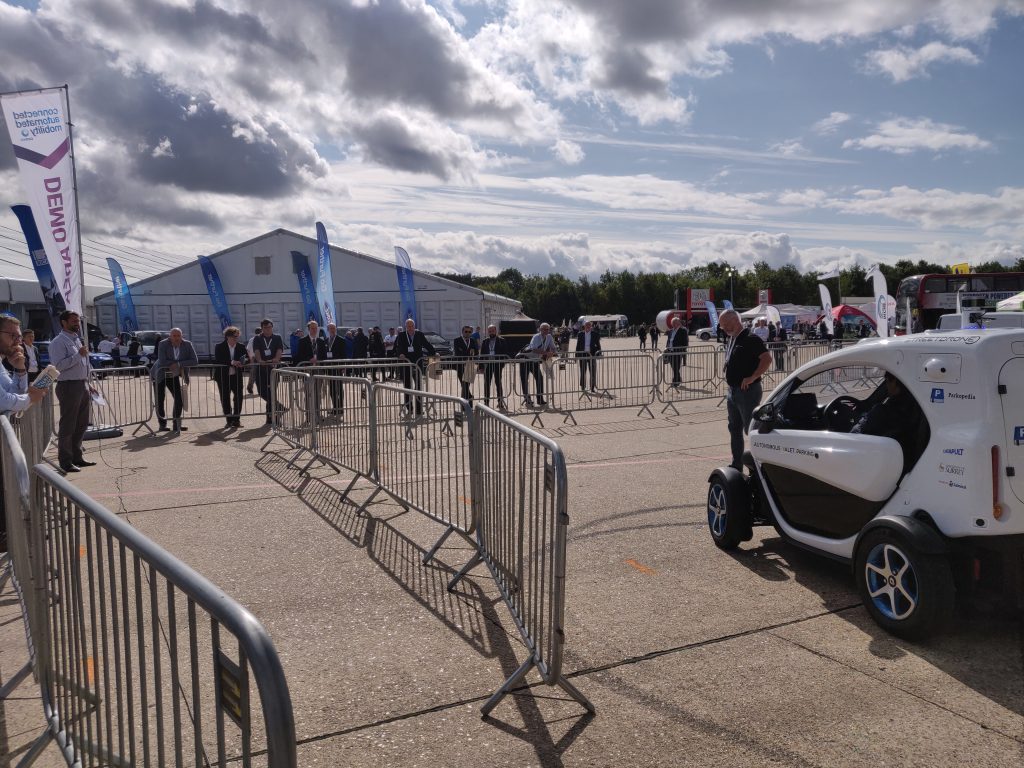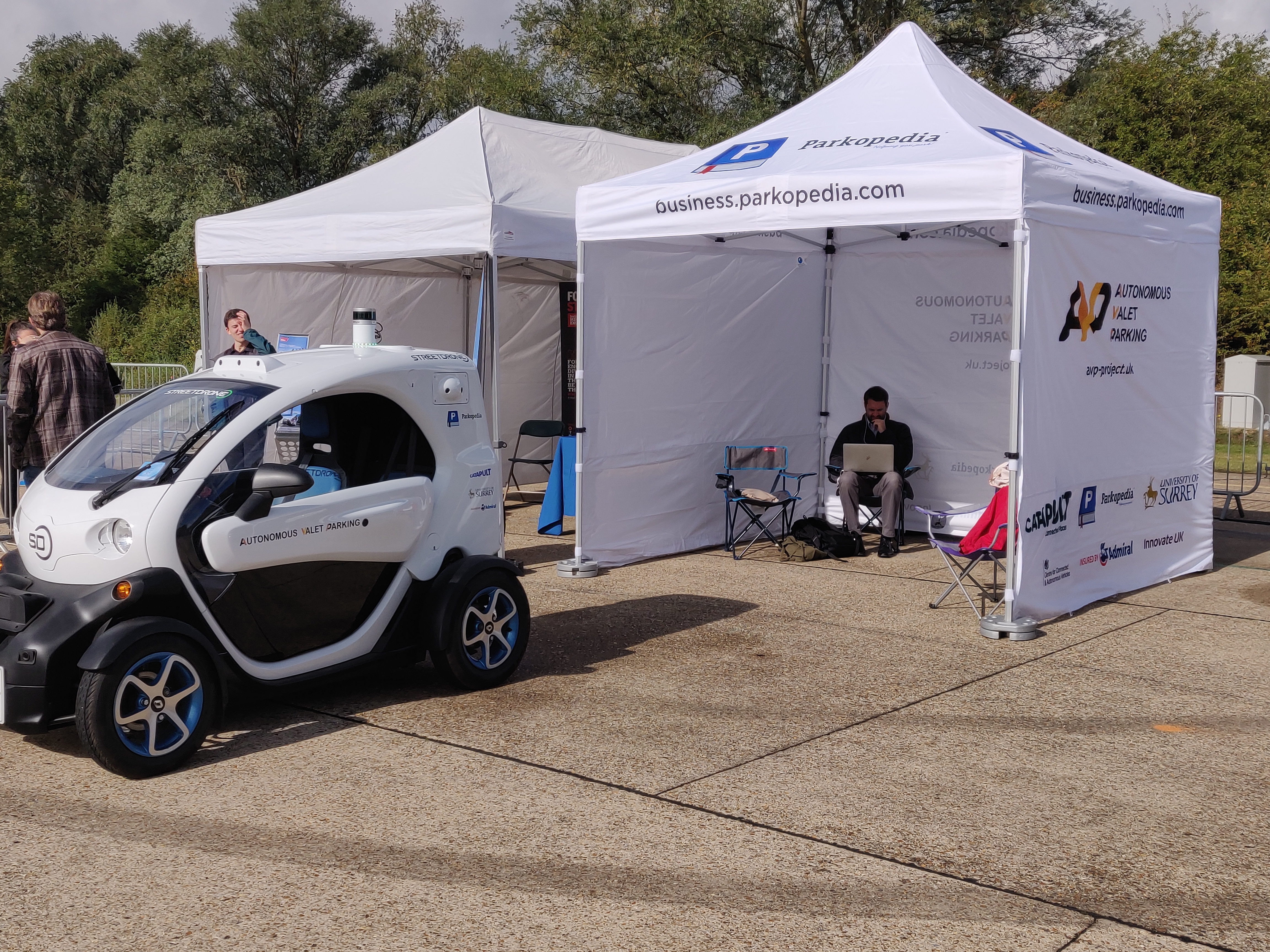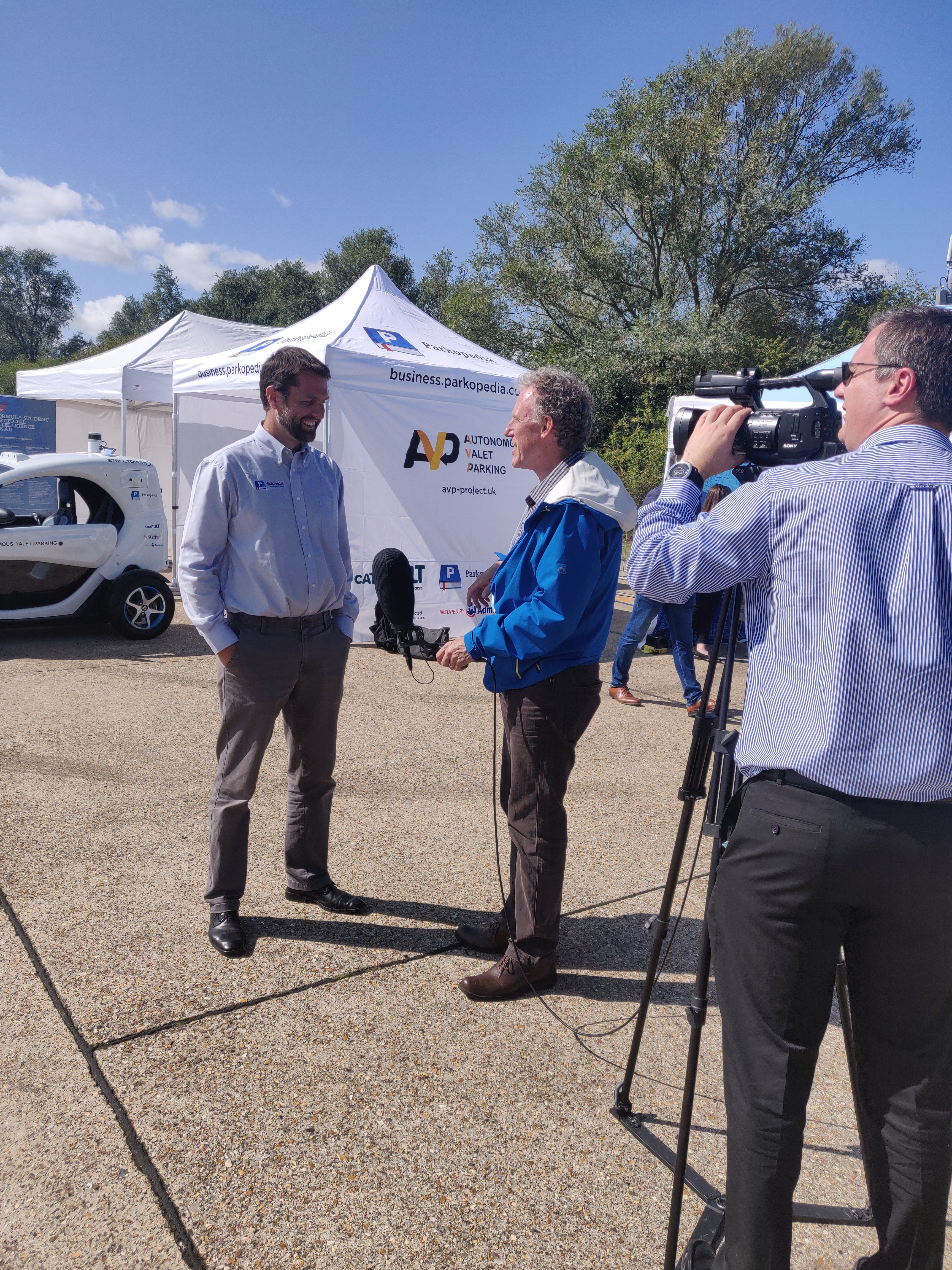The Autonomous Valet Parking project is a 30-month project funded by InnovateUK and the Centre for Connected and Autonomous Vehicles, due to end on 31 October 2020. We are five quarters in and a lot has been achieved:
- We have created our first maps of car parks which we are trialling with customers,
- The vision-based localisation algorithms are well advanced,
- The stakeholder engagement work is complete,
- The autonomous software to power our StreetDrone is ready to take out for a demo,
- The safety case has ensured that we are in a position to demo this safely.
At the CENEX-CAM event that took place at Millbrook Proving Ground UK 4-5 September 2019, we showed the progress made in the project at this halfway point. The main objective was to demonstrate that the Autoware-based software on the StreetDrone is able to control the vehicle by following waypoints consistently and accurately. The demonstration scenario consisted of three parts and reflects how we believe AVP will be used in real life. In the demo, you can see:
- The vehicle following a pre-defined set of waypoints to the designated parking spot, having been dropped off at a designated drop-off zone by its driver,
- The vehicle exiting the parking spot and driving to the pick-up zone (where the vehicle’s regular driver would collect it),
- A test of our automatic emergency braking, using the front-centre ultrasonic sensor on the vehicle.
This public demo was an important milestone for us to demonstrate our ability to control the vehicle using a PID controller for longitudinal (throttle) control and pure-pursuit for lateral (steering) control.
Localisation is done using the LiDAR with NDT matching. At this stage of the project we’ve limited the speed to 1m/s, this will double to 2m/s (5mph) in the future.
We are using the SAE convention for marking lamps, with green for manual control, blue when under autonomous control and red when an error state occurs. Adding the RGB LED lighting was done alongside the development work to enable switching between forwards and reverse in software while still in autonomous mode.

The safety case for the project combines operational and system safety. On the operational side we have a safety driver who can take over when a dangerous situation presents, and we also have system safety using the LiDAR and ultrasonic sensors, which will bring the vehicle to a stop to avoid driving into a hazard. We demonstrated Automated Emergency Braking using the ultrasonic sensor, following the testing and preparation done previously at Turweston.

Overall, the demo (done five times in two days) was well received, and we saw good levels of interest from delegates at the event, with lots of questions being asked about the project. It was a pleasure to speak to media and to delegates.
We’ve learned a lot from our friends at Ordnance Survey and we look forward to hosting them and others at the upcoming Autoware Hackathon. Many thanks to them of all the help and for storing our StreetDrone overnight under their gazebo!

Over the remaining 13 months of the project, we will be working on navigation and localisation using maps, with a final demonstration of the end solution due to take place in Autumn 2020.










Leave a Reply